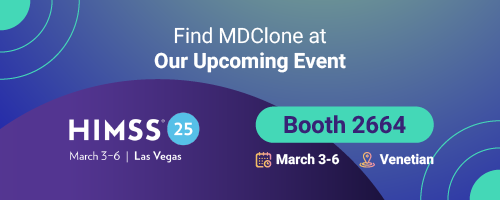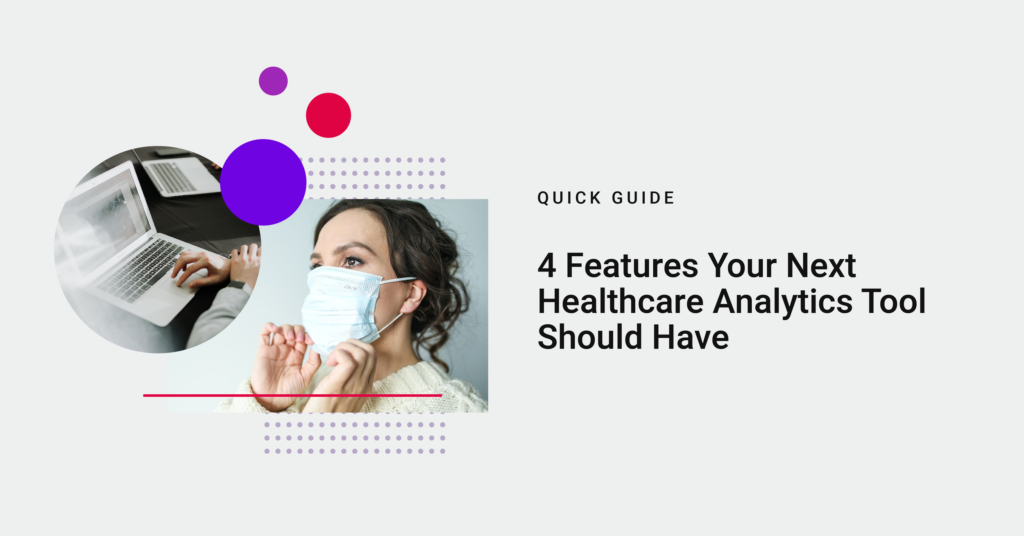One of the most powerful assets of a health system is its healthcare data. Every second of every day, trillions of data points are captured by healthcare applications, programs, and registries in hospitals, clinics, and research labs, but often these data remain difficult to access and analyze. Yet, these data hold vast amounts of knowledge that could be utilized to improve patient care, operations, and research. This information, if only accessible, could hold the answers to better care pathways, improved patient outcomes, more efficient operational processes, faster research cycles, and accelerated innovation. So why aren’t we using it?
Healthcare data are extremely protected – and for good reason. Accessing private patient information is necessary to provide healthcare, but legal and compliance barriers, mixed with complex internal processes, committees, rules, and regulations, make gaining access to data for informative decision-making anything but easy in the healthcare environment.
With seemingly endless data, the ability to sort through, organize, and analyze information has been a difficult task for the healthcare industry for years as well. The manual process of extracting data from multiple sources, structuring the often-disparate data appropriately, delivering information to the healthcare workers requesting it, and re-adjusting it based on initial analysis is tedious, involves too many additional resources, and is not easily scalable.
So how do we begin unlocking this powerful asset without risking patient privacy? How do we streamline data access so we can empower clinicians across an organization to jump in, explore, ask questions, and find answers?
The answer is a difficult one, and in 2021 more than ever, we need a tool that can deliver all of the promises of free exploration at fast speeds while maintaining maximum security. Many of today’s healthcare analytics tools include a few robust features, key capabilities, or specializations, but few deliver on all of the promises a truly powerful healthcare data analytics platform should.
Below, we define four major features your next healthcare data analytics tool should have in order to maximize data utility at speed, without barriers and with security. If accelerating innovation, empowering your staff, and driving down costs while improving patient care is something that interests you, dive into these four must-have features for your next healthcare analytics tool.
1 ) The ability to organize immense amounts of data
In today’s world, clinicians need to understand the full story behind a patient’s journey, from social, life, and medical events to prescriptions to billing information and hospital costs. They want to easily visualize this journey in order to make predictions, intervene in care pathways, and steer the patient into more proactive care before there are negative outcomes. Improved patient care saves the health system money and resources because healthier patients are often less-costly patients.
The ideal healthcare analytics platform is able to organize these myriad data points, both structured and unstructured, from multiple platforms and systems, into an easy-to-read patient timeline with a longitudinal structure, time-stamped to a patient’s life. With all events captured in an easily digestible format, clinicians are able to better understand the patient journey leading up to the current state and to make the best decision to move the patient forward.
2 ) Self-service functionality and flexibility for users
Traditional data extraction and discovery processes often discourage the kind of exploration and engagement that are needed in order to influence positive healthcare change. Healthcare projects are often impeded by time, efficiency, and accessibility challenges. Layers of bureaucracy, reliance on external teams, and balancing efficiency with day-to-day tasks result in obstacles that hinder operational, quality, innovation, and research excellence. The healthcare system as a whole suffers from lagging, over-mediated processes.
Waiting for data to be extracted should be a thing of the past. Clinicians need to be able to find answers quickly, and those answers often lie inside difficult-to-access healthcare data repositories. To push healthcare innovation forward, these data need to be unlocked for clinicians so the discovery cycle can be continuous, iterative, and user-initiated. When a clinician can explore data independently, ask questions relevant to him or her, and then push those discoveries into action, the health system as a whole benefits. When decisions are driven by data, every aspect of patient care benefits as well – from delivery of care, to prevention and intervention, to cost savings, to better overall well-being. There is power in data, and there is power in enabling healthcare workers to leverage it.
Clinicians need to be able to instantly adjust queries, explore trends and patterns, identify outliers, determine cohort size, and share information freely, yet securely, with teams and departments. Self-service access to healthcare data is a fundamentally key component of a powerful healthcare analytics platform.
3 ) Synthetic data capabilities
Synthetic data is a hot topic in almost every industry, and it is quickly picking up speed in healthcare. Synthetic data allow users within a healthcare organization to explore populations unfettered by the constraints normally associated with human-subject data. Users can determine cohorts, measure population sizes, test theories, investigate ideas, and instantly access the information they need in order to answer questions and validate a hypothesis.
Because synthetic data cannot be traced back to individual patients, but maintains its statistical accuracy, it’s a key feature that enables maximum utility of data while preserving privacy. Synthetic data open the door to not only individual user exploration, but also cross-institutional teamwork, and external-party collaboration. Easily share information and insights across teams, departments, entire organizations, or outside vendors and partners. Embrace external projects and utilize world-class experts to find insights faster. The possibilities of synthetic data for healthcare are truly endless and should not be a sole capability of a healthcare data platform, but a capability alongside other powerful features. Synthetic data functionality is a crucial feature for any healthcare data analytics tool.
4 ) Third-party collaboration
There is strength in numbers, and health systems are beginning to realize the power of community, especially with the onset of the pandemic. Worldwide collaboration is critically necessary to research and study COVID-19 and other diseases with global reach, and to bring insights together to determine answers faster. Not only are health systems finding benefit in working together, sharing information, and collaborating on best practices, benchmarks, and research projects, but pharmaceutical companies, life-science organizations, and governmental agencies are seeking to join forces with health systems as well. By supporting each other with common healthcare interests and projects, organizations worldwide are able to utilize external third parties and outside companies to accelerate innovation as one united front. A powerful healthcare analytics tool provides the ability to not only produce synthetic data with user controls in place, but to provide the community with healthcare innovation in a revolutionary new way.
Tying it all together
When it comes to selecting the best healthcare data analytics tool for your institution, it is important to assess not only your needs as a user, but to understand the key functionality that will make the biggest impact on different lines of business within your organization. Healthcare data analytics tools often have several robust, intuitive features when it comes to organizing, extracting, visualizing, analyzing, and sharing information, but often these platforms are missing key features. Giving healthcare workers the self-service ability to easily and freely explore data to find insights quickly is one of the most powerful ways to optimize positive change within your health system. From research to operations to innovation, choose a tool that meets the needs of all areas within your business so your organization can begin exploring data internally while enabling a greater community of collaboration across outside institutions and partnerships as well.
“One of the great values of MDClone is that the data is structured in a linear timeline so every event that occurs in the patient’s life (whether it be part of their social determinants of health, the billing we do for them through an insurance company, the costs inside a hospital, and everything that occurs in our medical record) gets labeled as an event.
You can answer some very important questions in a very easy way.
I can ask that very important question on what i should do next – what’s the next best action for this patient? How is that patient likely to look in the future, and I can use it to be very proactive and to understand the total risk associated with that patient.”
Dr. Mike Phillips, Intermountain Healthcare
See the ADAMS Platform in Action
The MDClone ADAMS Platform enables all four of these features from self-service access to collaboration capabilities to leveraging massive amounts of data.
If you would like to learn more, request a demonstration today.












